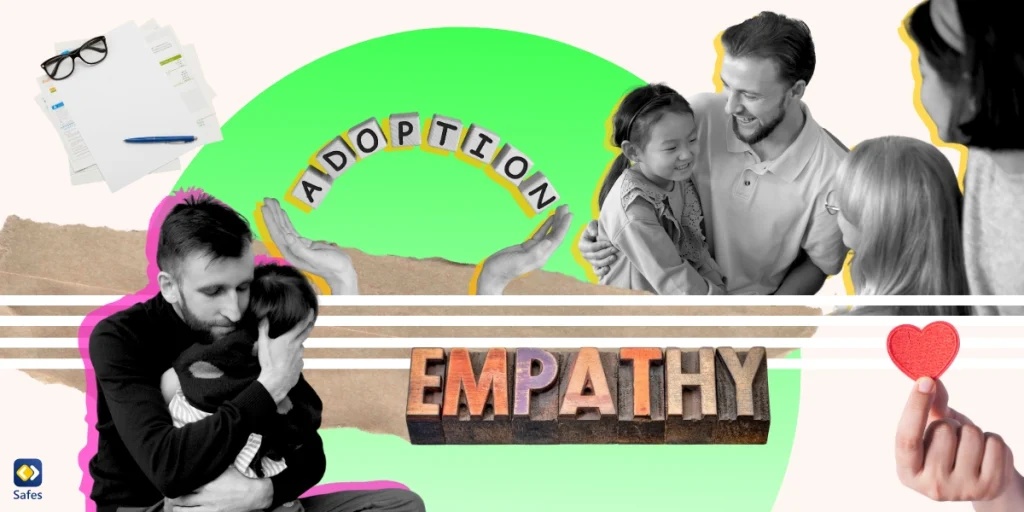Adopting a child is a significant decision, and there are many routes potential parents can consider. While traditional adoption is often at the forefront of discussions, another important avenue is kinship adoption. In this post, we will delve into the specifics of kinship adoption requirements, providing crucial information about the legal and procedural aspects. We will also discuss the benefits, challenges, and available support for families considering this route.
Download and Start Your Free Trial of the Safes Parental Control App
What is Kinship Adoption?
Kinship adoption is a form of adoption where a relative or someone with a significant relationship to a child becomes their legal guardian. It can be the case when a child has already been living with a family member who has acted as their guardian or parental figure, and the family decides to legally protect the child’s status within the family. In other situations, a mother may know she is unable to provide for a child, so she relinquishes her parental rights to a trusted family member. This family member becomes the child’s legal parent, but the child’s birth mother can remain an active part of the child’s life.
The Growing Trend of Kinship Adoption
Family adoption, while not as widely discussed as traditional adoption routes, is a significant and growing trend. It offers stability and permanency to children within their extended families. In the United States, for instance, more than 2.5 million children are being raised by family members other than their parents. This shows kinship adoption’s significant role in providing secure and loving homes for children who need them.

Kinship Adoption Requirements: Eligibility and Legal Aspects
There are several kinship adoption requirements that potential parents need to meet. First, they must be eligible to adopt a child. For this to happen, they must
- Meet age requirements
- Demonstrate financial stability
- Pass criminal background checks
Second, the legal process of kinship adoption varies depending on where you live and the details of your situation. It typically requires obtaining consent from the child’s parents and/or having the court terminate their legal parental rights. You will then need to:
- Petition the court to adopt your family member’s child
- Submit necessary documentation to verify your readiness to parent the child
- Possibly undergo a post-placement supervision period
- Attend a finalization hearing, where you will be granted legal parental rights
The Home Assessment Process
Home assessment or home study is a crucial aspect of the kinship adoption process. A social worker will visit your home to ensure it is a safe and suitable environment for a child. They will also interview you and other household members to understand your motivations for adopting and your plans for caring for the child. This process is designed to prioritize the child’s best interests.
The Benefits of Kinship Adoption
Kinship adoption offers several benefits for both the child and the adoptive parents. For the child, being adopted by a family member can provide a sense of stability and continuity, as they are likely to be familiar with their adoptive parent and possibly the broader family network. This situation can also make the transition into the adoptive family smoother.
For the adoptive parents, legally solidifying the emotional bond they have with the child can be immensely rewarding. In the event of an emergency, they can make medical decisions and access their medical records without needing the biological parents’ permission. The child can also benefit from the adoptive parents’ insurance and social security and inherit from them.

The Challenges of Kinship Adoption
While kinship adoption has several benefits, it also comes with challenges. Navigating the emotional aspects of adopting a relative’s child can be complex, mainly when the biological parents are still part of the child’s life. Furthermore, adopting a family member can sometimes lead to complicated dynamics within the extended family.
There can also be practical challenges, such as the child adjusting to a new home environment or the adoptive parents adapting to becoming primary caregivers. However, these challenges can be navigated successfully with adequate support and resources.
Available Support for Kinship Adoption
A variety of support services are available for families considering or going through kinship adoption. These range from legal advice and assistance to mental health support and parenting resources.
Adoption agencies can provide crucial guidance throughout the adoption process, helping families navigate legal procedures and connect with necessary resources. Support groups can also offer a valuable space for adoptive parents to share their experiences and learn from others in similar situations.
Safes Parental Control App: A Valuable Resource for Adoptive Parents
Digital tools like the Safes parental control app can be invaluable for those embarking on the journey of kinship adoption. Safes can help foster parents and guardians navigate their parenting journey, allowing them to monitor their children’s online activity, set screen time limits, and block inappropriate content. It’s a great way to ensure your child’s digital safety while encouraging healthy online habits.
Try Safes to protect your child by downloading it from our website or Google Play and App Store. Find out more about protecting children on various platforms using the following resources:
- Windows parental controls
- Macbook parental controls
- Android parental controls
- iPhone parental controls
Sign up for a free trial with Safes to get detailed information and guidance on navigating the kinship adoption process.
Final Thoughts on Kinship Adoption
Kinship adoption is a significant commitment, but with support, preparation, and resources, it can provide a loving and secure family for a child in need. While the process may involve legal hurdles and emotional challenges, the ultimate reward is creating a stable, supportive, and loving home for a child. With careful consideration, support, and a lot of love, kinship adoption can be a positive and fulfilling experience for all involved.
If you are a potential adoptive parent, remember that you are not alone. Reach out to adoption professionals, join support groups, and utilize resources like the Safes parental control app to support your journey. With preparation and guidance, you can navigate the kinship adoption process successfully and provide a loving home for a child in need.
Your Child’s Online Safety Starts Here
Every parent today needs a solution to manage screen time and keep their child safe online.
Without the right tools, digital risks and excessive screen time can impact children's well-being. Safes helps parents set healthy boundaries, monitor activity, and protect kids from online dangers—all with an easy-to-use app.
Take control of your child’s digital world. Learn more about Safes or download the app to start your free trial today!




